Oppo Reno 2Z Review
Oppo Reno 2Z Review
If you value design and screen quality, this is a top-notch mid-range Android
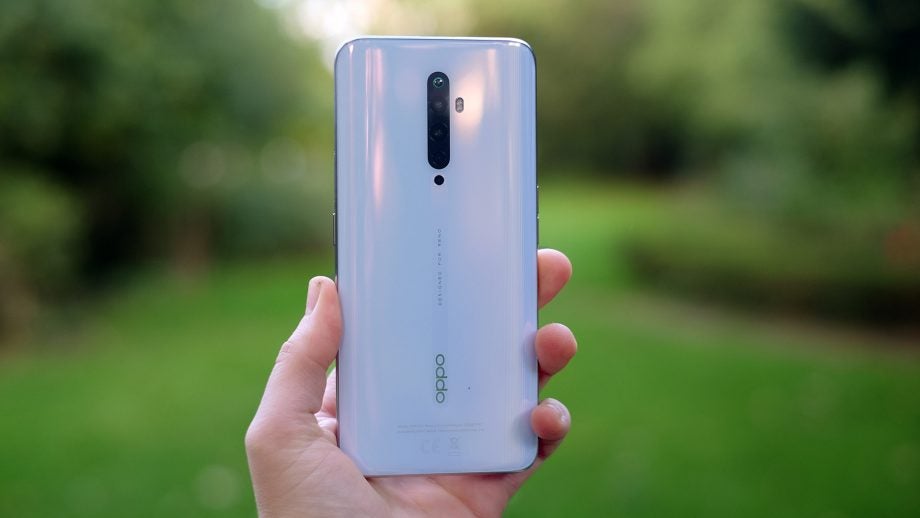
Verdict
A top-notch mid-range Android if you value design and screen quality highly.
Pros
- Good value
- Big movie-loving screen
- High quality glass build
- Neat mechanical front camera
Cons
- Quad camera array is a red herring
- Could do with a little more GPU power
Key Specifications
- Review Price: £329
- MediaTek Helio P90 CPU
- 8GB RAM
- 128GB storage
- 6.5-inch 2340 x 1080 pixel OLED screen
- Android 9 with ColorOS 6.1
- 48MP+8MP+2MP+2MP rear cameras
- 16MP motorised front camera
What is the Oppo Reno 2Z?
We called the original Reno Z a leading mid-range phone in our review. It wasn’t perfect, but it offered a lot of hardware for a very reasonable spend.
The Oppo Reno 2 Z just adds more, with an extra two rear cameras and motorised front camera that makes a great screen even better. We are still not fans of Oppo’s ColorOS interface, which tries a little too hard to make its mark, but this is a very compelling phone.
It looks and feels much like £500-plus alternatives, battery life is good and the Reno 2 Z is powerful enough at the price.
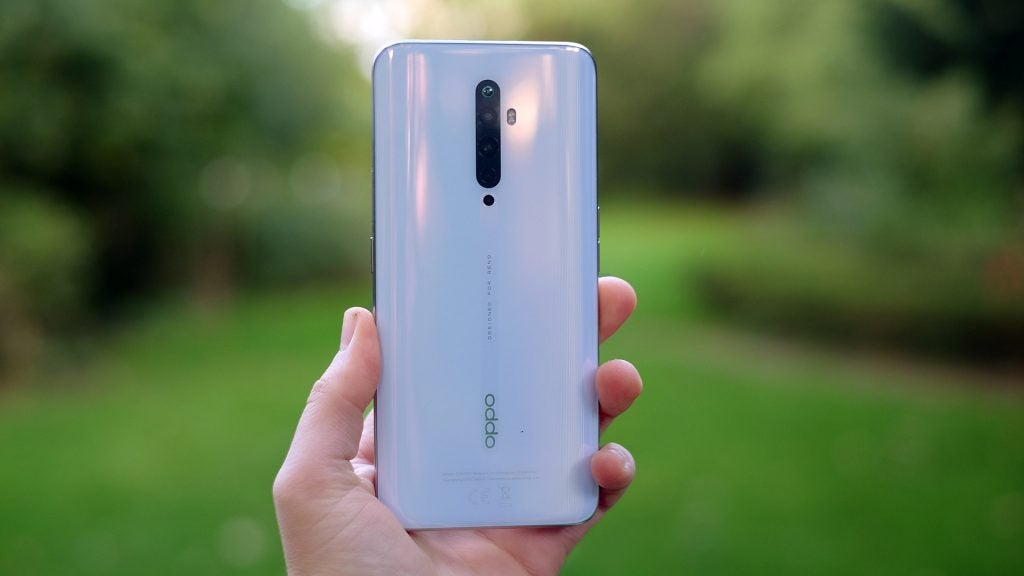
Oppo Reno 2Z Design – Expensive looking glass and metal for a mid-range price
The Oppo Reno 2Z is one of the most expensive-looking phones you’ll find at the price. There’s no notch, the screen borders are small and its shell is aluminium and Gorilla Glass 5.
It’s thicker than most at 8.7mm, but this lets the rear cameras lie completely flush with the back glass. A tiny metal bump above the cameras stops damage to the camera glass should you accidentally scrape the whole back of the phone against rough surface.
The relative thickness also allows for a 4035mAh battery without the kind of internal engineering that goes into making a Samsung Galaxy Note 10 Plus.
Related: Best phone 2019
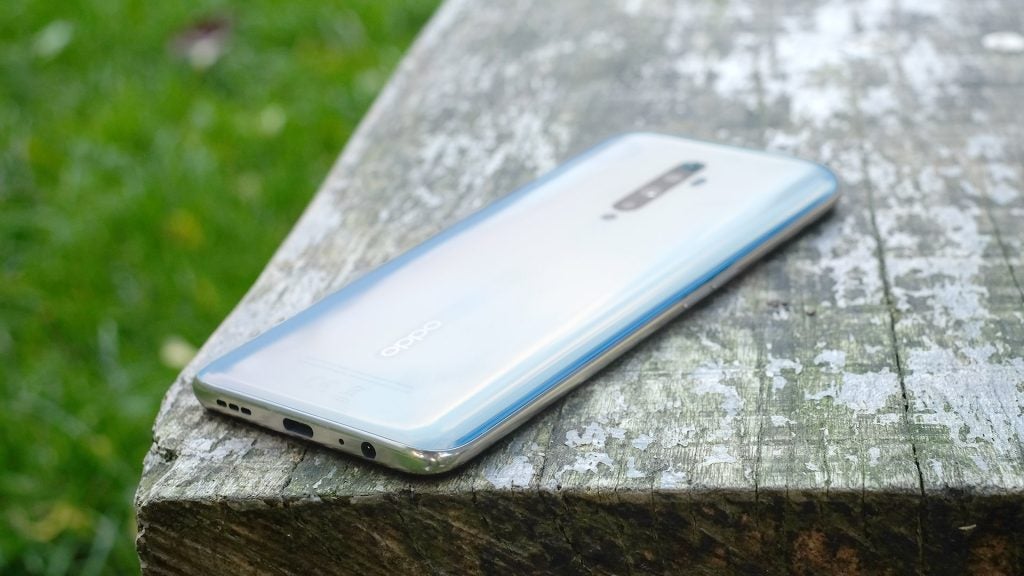
This is a substantial phone. It has the presence of a top-end phone, at the price of one made for people not willing to drop everything (mostly cash) to get hold of the latest tech.
There are several thoughtful extras too. The Oppo Reno 2Z has a headphone jack, missing from most expensive mobiles at this point, and an expertly applied screen protector. A faux leather case is included in the box, for full protection.
It has a fast in-screen fingerprint scanner too, another hallmark of a more expensive phone. The Oppo Reno 2Z oozes value in a very deliberate way.
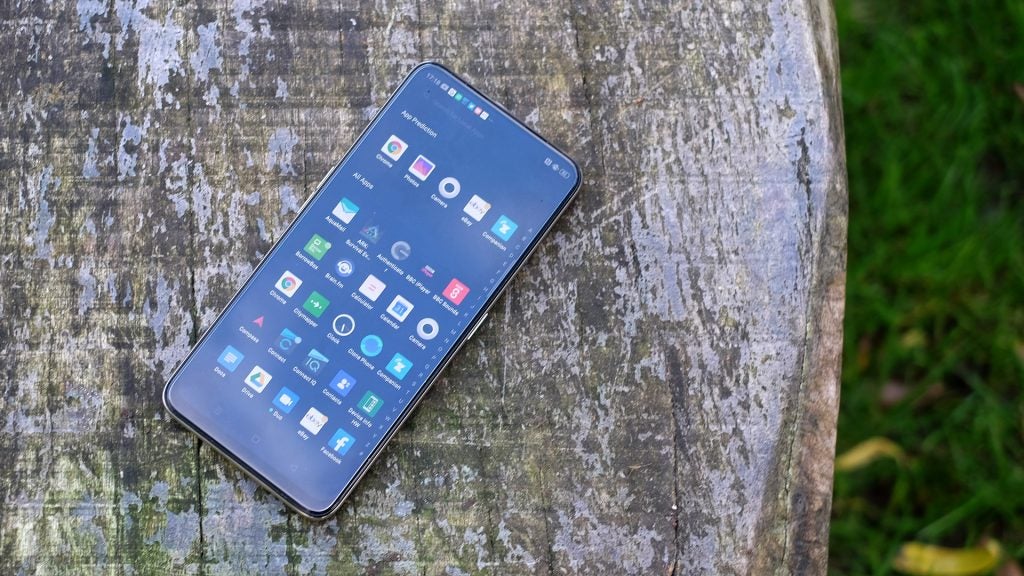
The Google Pixel 3A XL is an obvious alternative, and in some ways it’s better. The processor’s GPU is superior, the camera is more consistent and the software is cleaner. But the Oppo feels and looks much more impressive. Even if you ignore the differences of glass and metal versus plastic, the big display border of the Pixel make it seem stodgy and a little dated next to the Oppo.
There’s one thing missing, though – the Oppo Reno 2Z has no official water resistance.
Oppo Reno 2Z Screen – A notch-free OLED panel to keep gamers happy
The Oppo Reno 2 Z has a 6.52-inch OLED “panoramic” display, the term Oppo uses to describe the notch-free screen.
It’s a 2340 x 1080 pixel panel, and is comfortably one of the best you’ll find in a sub-£400 phone. Big, bold, rich and free of notches and punch holes, it is simply brilliant for gaming and watching video.
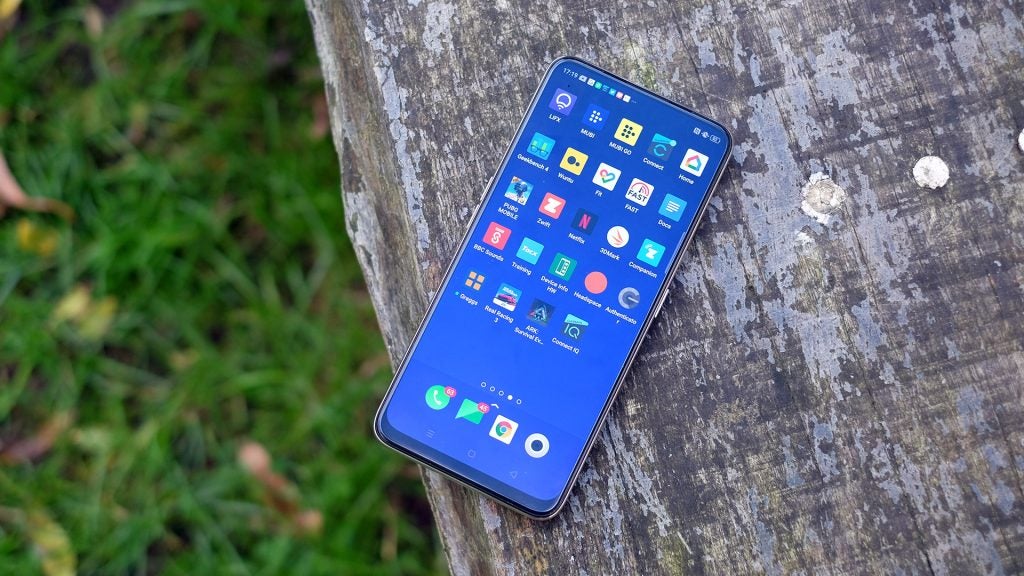
You could even argue it is better than the displays of some top-end phones, as there’s no colour shift or brightness drop-off caused by a curved display like the Galaxy S10’s. Most of the fundamentals of image quality are good too. Whites look pure, and you have some control over the temperature, whether the tone skews warm (orangey) or cool (blue).
The Oppo Reno 2Z would benefit from some colour controls, though. Screen colour is very saturated, and the option to tone it down just a little would be welcome. This is in the Oppo Reno 2, but not the Z, suggesting we may see the feature in an update.
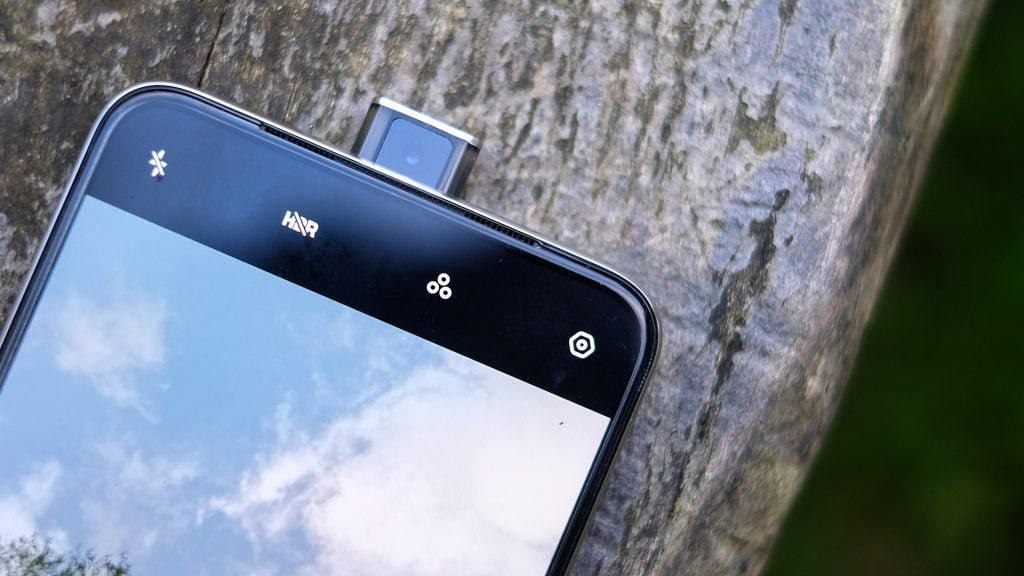
However, the calibration itself is sound. I took a photo of a scene that features some bold primary colours, and looked at it both on the Oppo Reno 2 Z’s screen and that of a calibrated MacBook Pro. The difference in saturation was only slight, so your photos won’t suddenly look weak and undersaturated when you upload them to a social network or transfer them elsewhere.
The Oppo Reno 2Z also supports HDR video, but there’s bad news for Netflix subscribers. At launch the phone is not fully certified, meaning it’s limited to 540p resolution.
Oppo Reno 2Z Software – A few customisation tweaks, but ColourOS won’t be for everyone
The Oppo Reno 2Z runs Android 9 and has an interface called ColorOS 6.1. This doesn’t come with as many preinstalled apps as, for example, Samsungs, but Oppo still has a way to go to make ColorOS look as good as Pixel UI, the cleanest Android of them all.
I’m not a fan of some of the choices made. Square icons? Whose idea was that? I spend a good half-hour trying to find where you can alter this, but you can’t. The Oppo Reno 2Z does have a system of themes, which change icons, wallpapers and lock screens, but all five themes have square icons. What do you have to do to get a circle around here (note: yes some of the icons are circular, but the default is square here)?
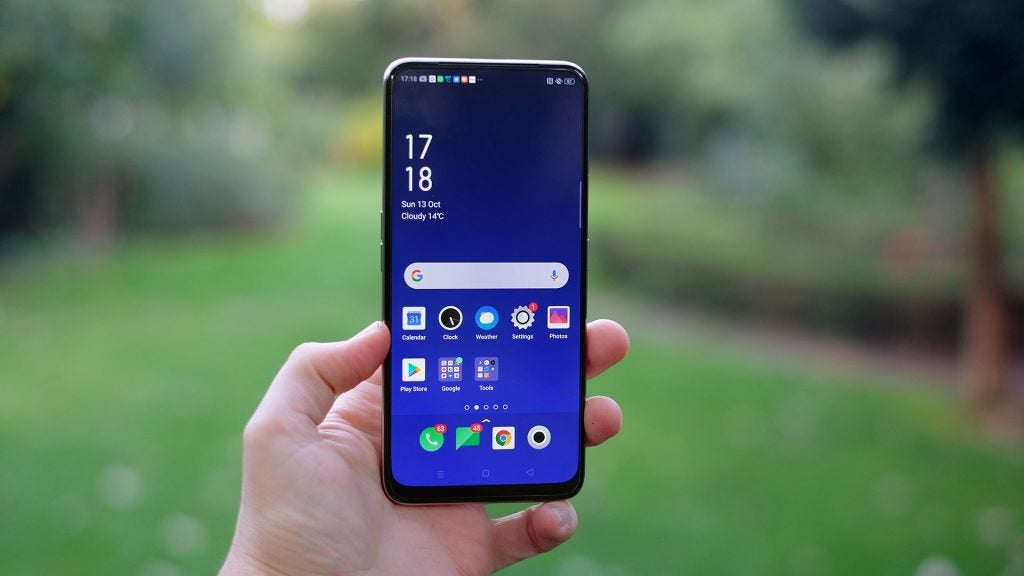
Those in other countries may have more luck. The Oppo Reno 2Z doesn’t give you access to the Oppo Theme store in the UK, so you’re stuck with the default five.
ColorOS also comes with a few apps you probably don’t want: AquaMail and the Opera browser. But you can get rid of them.
Only the surace layer of the Oppo Reno 2Z’s software is objectionable. Android feels quick, with very little sense of it being slowed by the phone’s mid-tier processor. I came to the phone after using the low-cost Motorola Moto E6 Plus, and this is in a completely different league. This is performance fit for the high-end crowd.
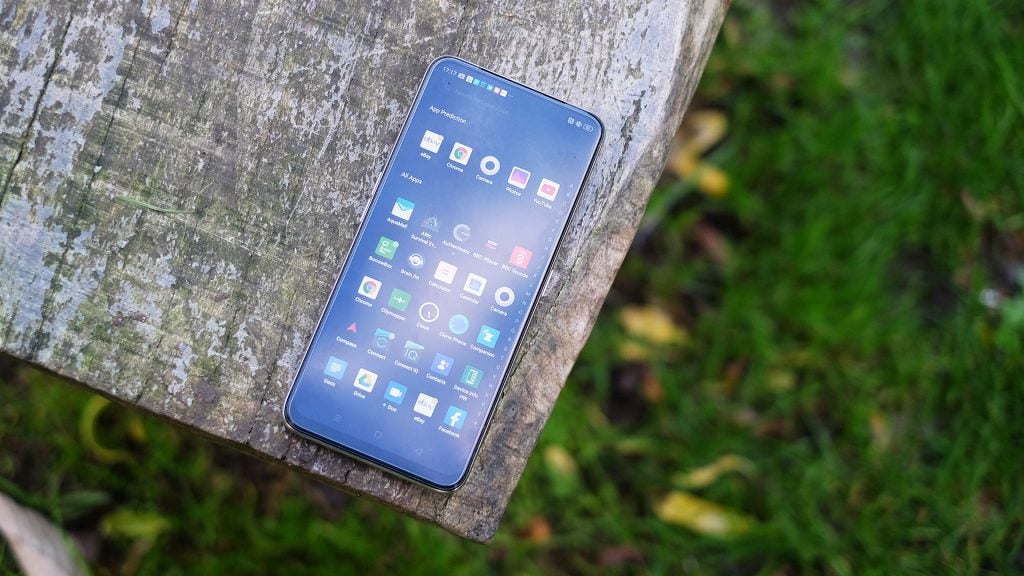
Despite the lack of truly customisable icons, there are some very useful UI tweaks. You can choose whether to have an app drawer or not, and how many rows of icons the Oppo Reno 2Z fits into its homescreens. I recommend setting this to the max unless you have a spot of long-sightedness as, much like the Samsung Galaxy Note 10 Plus, the big icons it uses fresh out of the box can make it appear toy-like.
Oppo Reno 2Z Performance – Better than you might expect for the price
Day-to-day performance is great, but how about the harder stuff? The Oppo Reno 2Z has the same Mediatek Helio P90 CPU as the original Reno Z.
This is an octa-core processor with an accomplished set of cores for a mid-ranger. There are two Cortex-A75s and six Cortex-A55s, but the performance and “everyday” sets are arranged in sets of four cores, not two and six. There’s 8GB of RAM, more than you’d expect at the price.
The GPU is a PowerVR GM9446, from Britain’s own Imagination Technologies. According to 3D Mark’s Sling Shot Extreme benchmark, it’s only around a fifth as powerful as the Adreno 640 used in the Snapdragon 855. It scores 1193 points.

But how about something closer? The Samsung Galaxy A50 has a Mali-G72 MP3 GPU, which scores around 15-20% less in the same test. This Oppo also beats the Moto G7 Plus’s Adreno 509, but is ultimately no better than is expected at the price. And it is significantly less powerful than the Google Pixel 3A XL’s Adreno 615, which has around 60% more graphics power on tap (it scores 1679 points in Sling Shot Extreme).
The result? Stuttering frame rates in some games. I tried a couple of rounds of PUBG at the highest graphics settings available, “HD” with anti-aliasing switched on. It is very playable, but on a few occasions a less-than-ideal frame rate became obvious. Surprisingly, I found it most noticeable when inside a building, when you’d expect the rate to increase, if anything.
Ark: Survival Evolved does not run well at “Epic” with the resolution slider maxed either. The frame rate stutters. This game also exhibits a lot of visual glitches, suggesting it has not been properly optimised for the MediaTek CPU and its PowerVR GPU. Or that there’s still some work to be done with the Vulkan API, on which the game relies.
Such fine-tuning is all-but guaranteed when you buy a phone with one of the more popular Snapdragon CPUs. MediaTek chipsets continue to be something of a poor relation.
Oppo Reno 2Z Camera – An impressive ultra-wide lens with good, but not class-leading, image quality
The Oppo Reno 2Z has four cameras on the back and one on the front. This is where we see the biggest differences between the original Reno Z and this newer model.
It gains a motorised front unit, an 8-megapixel ultra-wide camera and a two 2MP portrait cameras. One is a depth sensor, the other a black and white one.
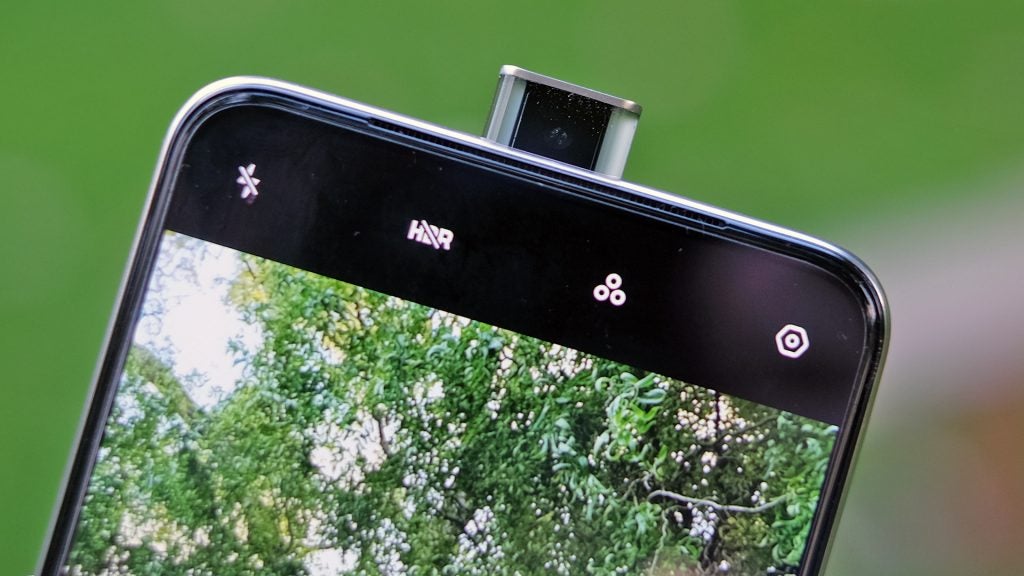
How does it compare to the higher-end Reno 2? The primary 48-megapixel camera has OIS in the Reno 2 but not here, and that phone has a 13-megapixel “zoom” instead of a 2MP mono portrait camera.
The 16-megapixel front camera is similar to the Reno 2’s, but with a different mechanism for the retracting selfie camera.
The Oppo Reno 2Z’a front camera sits in a little rectangle that zips in and out of the top of the phone when you use face unlock or the selfie mode. Its housing also has colour LEDs on its sides that glow as it does so — these have no real function, but they are eye-catching, if a little cheesy.
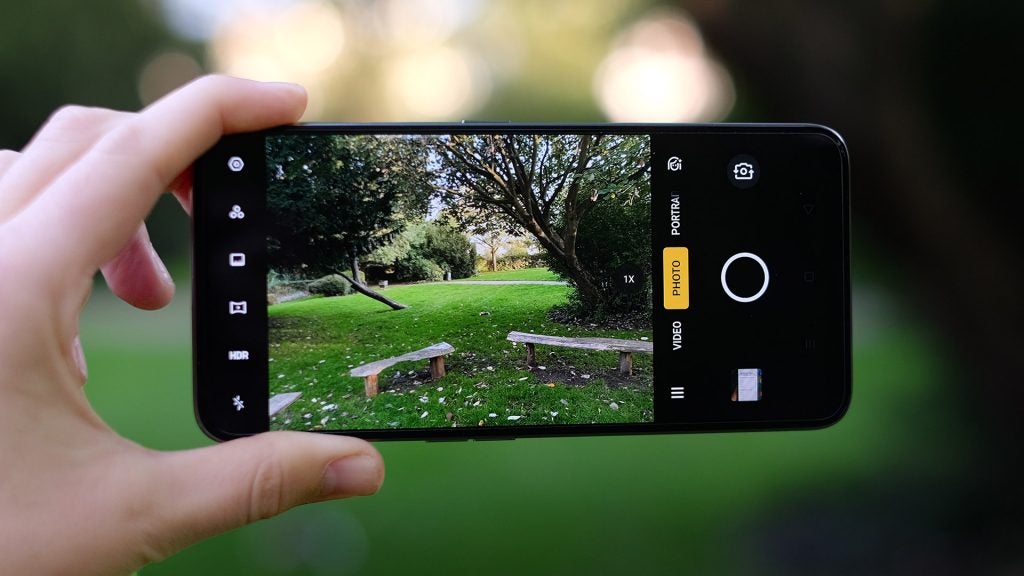
Skipping to the back, the Oppo Reno 2Z’s cameras offer a very wide range of composition options. You can shoot normal photos, ultra-wides or up to 10x zoom.
The Oppo Reno 2 Z has no optical zoom of its own, unlike the Reno 2, so all the information in zoomed-in photos comes from the 48-megapixel Sony IMX586 sensor. OnePlus used the same sensor in the OnePlus 7 Pro.
Some slightly cynical camera-loading is going on here. Two of the rear sensors are very low-cost components that bump up how good the Oppo Reno 2Z looks on paper without significantly adding to the cost, or its abilities.
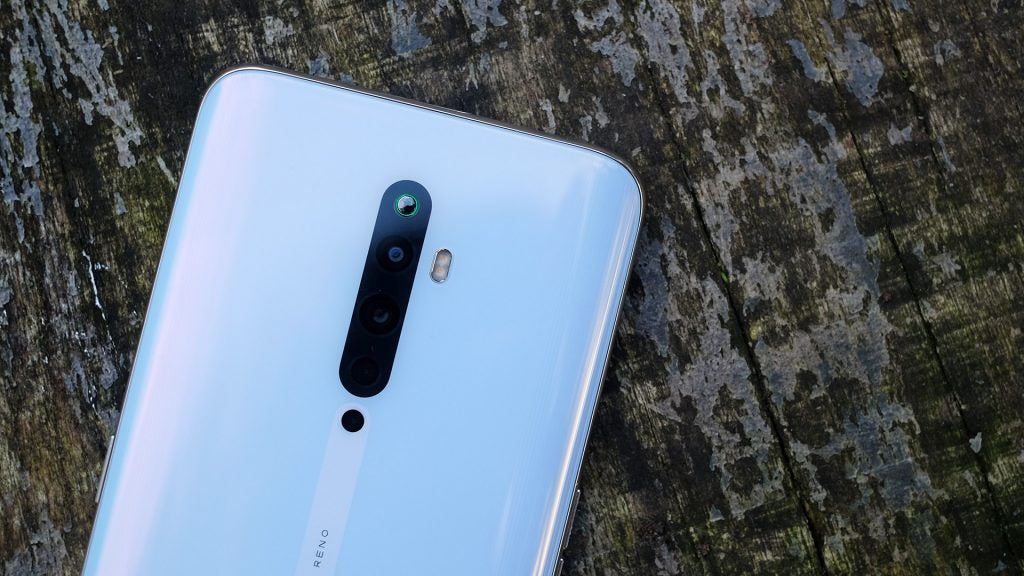
Using two portrait cameras on the back is a bizarre choice that only seems to impact a Portrait mode monochrome profile many will never even use. And using a good camera and turning the results black & white is much more effective than using a remedial 2MP B&W sensor for the same job. This is a cheap spec-boosting tactic.
General image quality is good, but the ultra-wide is the only real benefit over the class-leading Google Pixel 3A XL. And the Pixel otherwise beats the Reno in every category.
Its zoom-in images are more detailed, even with a 12MP sensor instead of a 48-megapixel one. Its Night Sight mode is better than the Reno 2Z’s Night mode, which tends to flatten images in the manner of an overactive HDR algorithm. It can result in some multi-exposure frame ghosting too, suggesting Oppo’s image processing isn’t quite good enough to deal with handshake movement (this is occasional, not pervasive).
Related: Best camera phone 2019
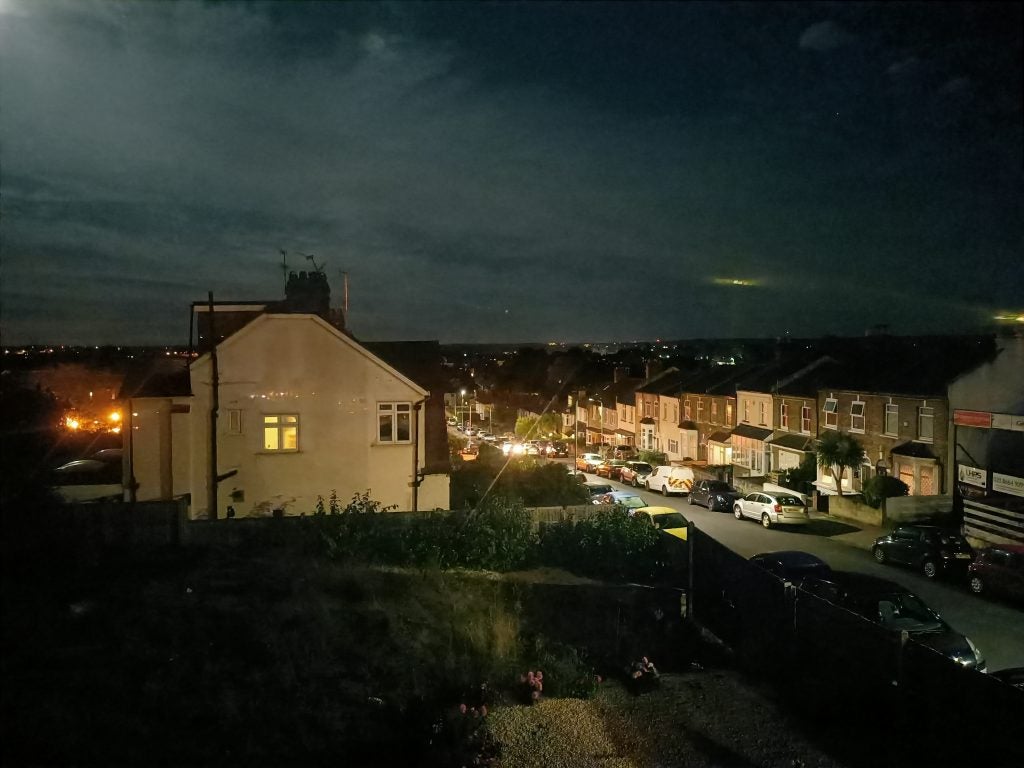
Auto mode
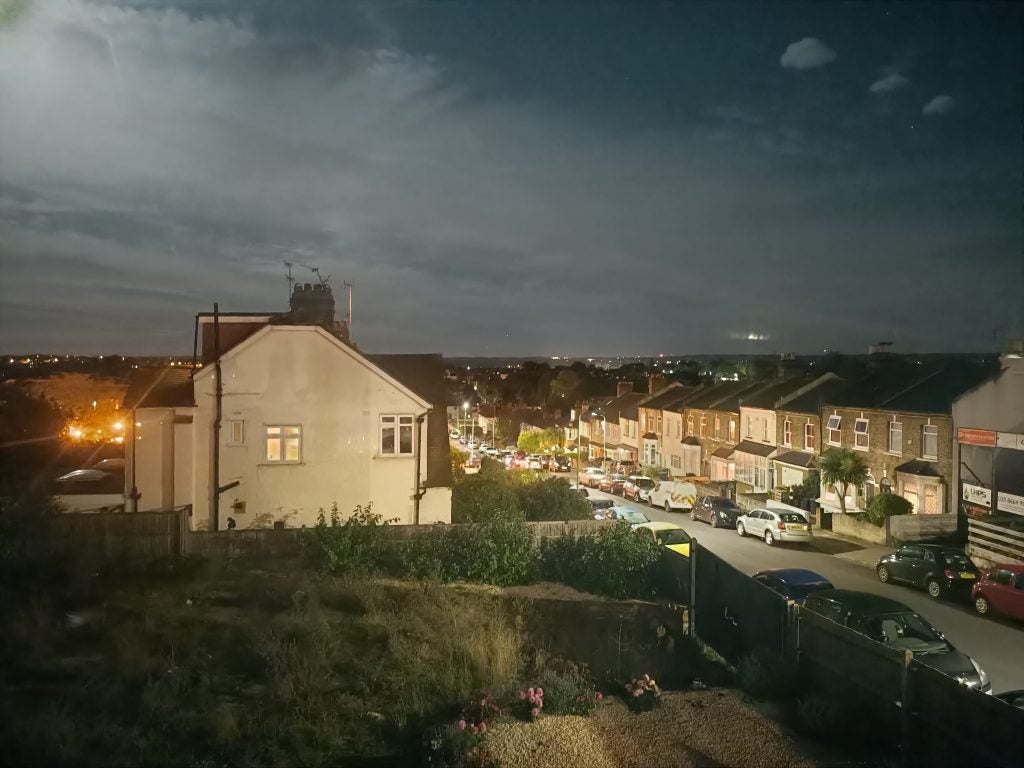
Night mode
This may sound quite damning, but is only really another indictment of a focus on sensor-loading rather than a laser-like focus on the actual results. The Reno 2Z can still take very good photos, including more-than-fair ones at night.
Let’s not forget the wide-angle camera either. This may not use mind-blowing hardware, but it has smart enough processing to smooth-out images taken in lower light and offers that all-important larger than life field of view.

Ultra-wide

An example with Night mode switched on

The same scene without night mode engaged looks more natural
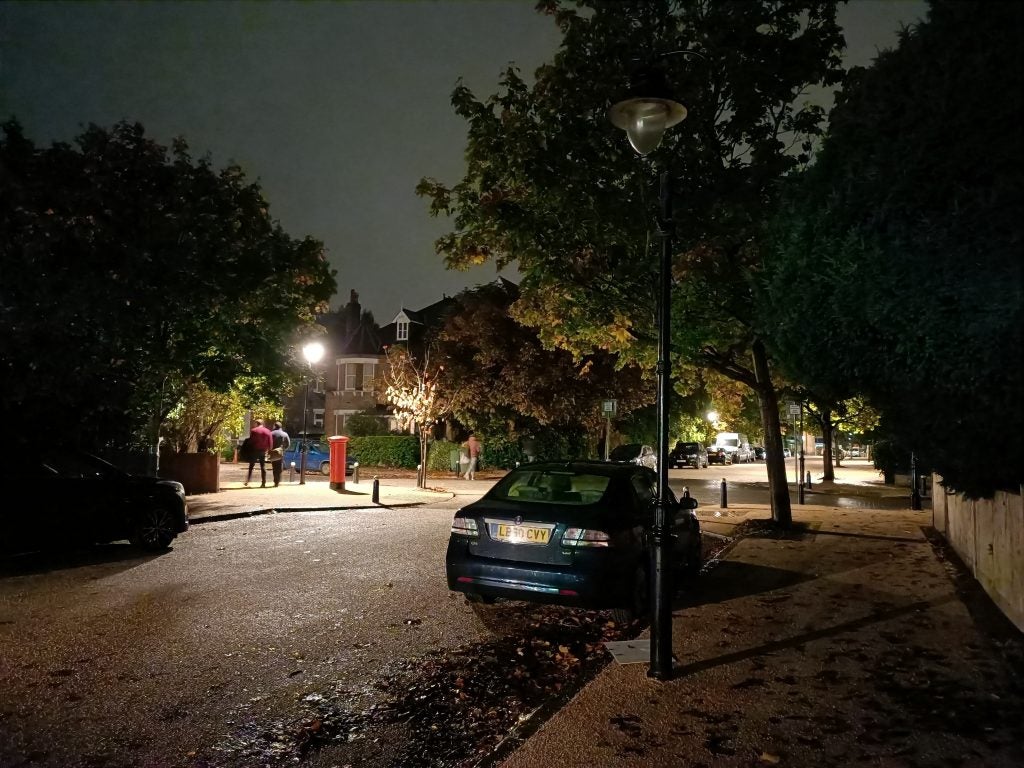
Night mode

Black and white portrait mode

The Oppo Reno 2 Z can shoot video at up to 4K resolution, 30 frames per second. However, the software stabilisation loses much of its effectiveness above 1080p, 30 frames per second. And even at this setting, the stabilisation algorithm can produce some odd shimmering effects when dealing with fast movement. My best guess is that it doesn’t properly account for the lack of optical stabilisation, present in the step-up Reno 2.
Oppo Reno 2Z Battery Life – Impressive fast charge, with good real-world stamina
The Oppo Reno 2 Z has a 4000mAh battery with VOOC charging, Oppo’s own high current (rather than voltage) charging standard.
Oppo’s claim is it fills up 50% of the battery in half an hour. I drained the battery down completely, set a 30-minute timer, plugged it in and see how far it got – 48% was the result. It’s not quite there, but is close enough.
Real-world stamina is good, if not quite at the level I’ve seen from some Huawei phones with similar capacity. You can generally rely on it to last a full day of heavy use, but the power management isn’t clever enough to see you end a day with almost 50% juice, as I found with the Huawei P30 Pro.
I’d class the stamina as good, but somewhat worse than the Samsung Galaxy Note 10 Plus, and significantly worse than the top Huaweis.

Should I buy the Oppo Reno 2Z?
Screen quality and design are the Oppo Reno 2 Z’s best bits, and it is a good-value phone all-round.
It has Google Pixel 3A XL-beating style, and some welcome techy extras like a motorised front camera and very fast in-screen fingerprint scanner. For style and the “gadget” factor, the Oppo Reno 2Z is a clear winner.
But for pure base-level substance, it doesn’t quite match the Pixel 3A range. Those phones have better GPUs, for smoother performance in high-end games, and a more consistent camera. However, for many, these benefits may be outweighed by the Oppo Reno 2 Z’s big, colourful screen. This phone is an absolute treat for movie streaming, so let’s hope it gets certified for HD Netflix streaming soon.
Verdict
A top-notch mid-range Android if you value design and screen quality highly.
How we test phones
We test every mobile phone we review thoroughly. We use industry standard tests to compare features properly and we use the phone as our main device over the review period. We’ll always tell you what we find and we never, ever, accept money to review a product.


